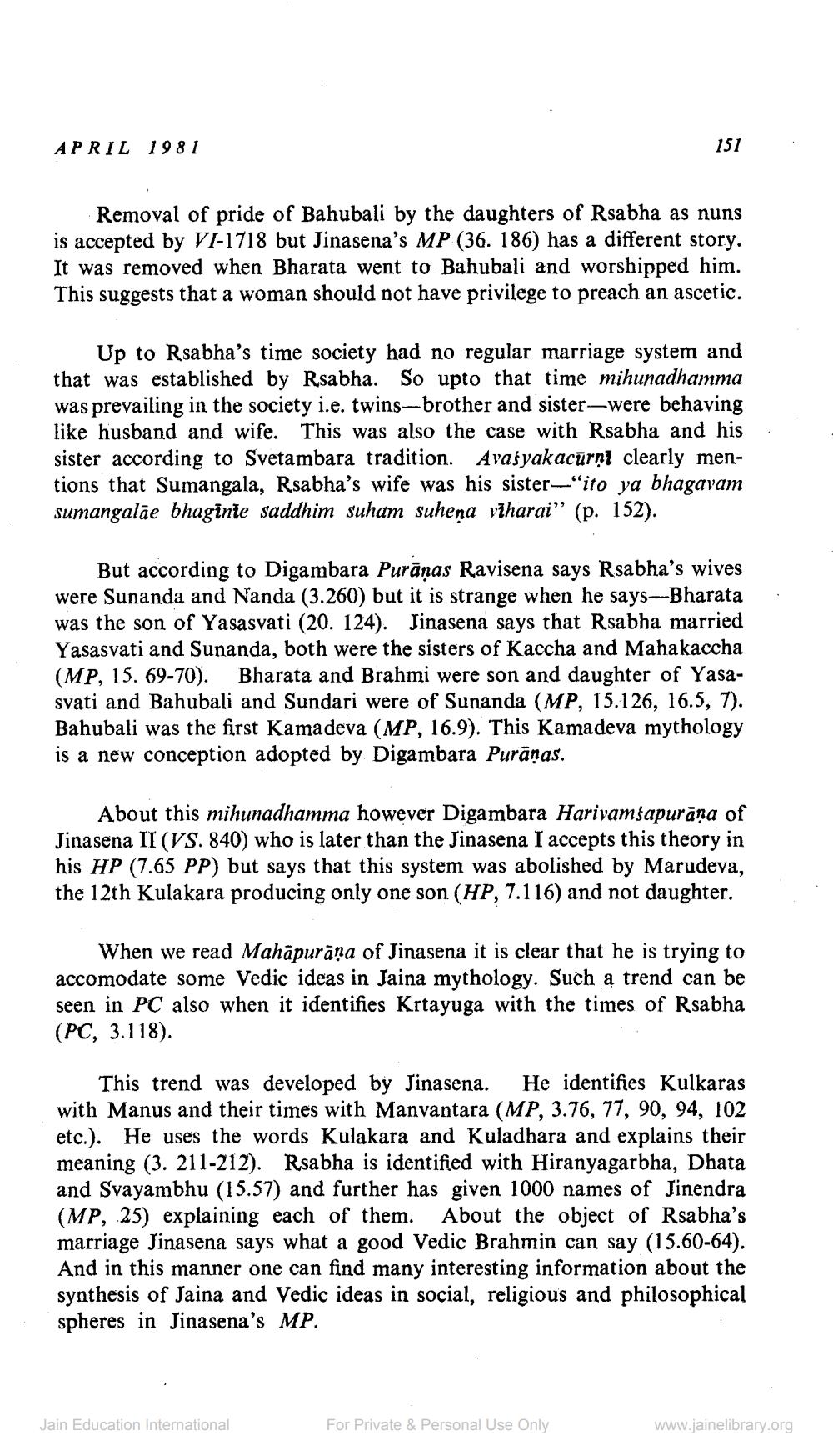________________
APRIL 1981
151
.
Removal of pride of Bahubali by the daughters of Rsabha as nuns is accepted by VI-1718 but Jinasena's MP (36. 186) has a different story. It was removed when Bharata went to Bahubali and worshipped him. This suggests that a woman should not have privilege to preach an ascetic.
Up to Rsabha's time society had no regular marriage system and
t was established by Rsabha. So upto that time mihunadhamma was prevailing in the society i.e. twins-brother and sister-were behaving like husband and wife. This was also the case with Rsabha and his sister according to Svetambara tradition. Avasyakacūrnt clearly mentions that Sumangala, Rsabha's wife was his sister-"ito ya bhagavam sumangalāe bhaginte saddhim suham suhena viharai" (p. 152).
But according to Digambara Purānas Ravisena says Rsabha's wives were Sunanda and Nanda (3.260) but it is strange when he says-Bharata was the son of Yasasvati (20. 124). Jinasena says that Rsabha married Yasasvati and Sunanda, both were the sisters of Kaccha and Mahakaccha (MP, 15. 69-70). Bharata and Brahmi were son and daughter of Yasasvati and Bahubali and Sundari were of Sunanda (MP, 15.126, 16.5, 7). Bahubali was the first Kamadeva (MP, 16.9). This Kamadeva mythology is a new conception adopted by Digambara Purāņas.
About this mihunadhamma however Digambara Harivamsapurana of Jinasena II (VS. 840) who is later than the Jinasena I accepts this theory in his HP (7.65 PP) but says that this system was abolished by Marudeva, the 12th Kulakara producing only one son (HP, 7.116) and not daughter.
When we read Mahāpurāņa of Jinasena it is clear that he is trying to accomodate some Vedic ideas in Jaina mythology. Such a trend can be seen in PC also when it identifies Krtayuga with the times of Rsabha (PC, 3.118).
This trend was developed by Jinasena. He identifies Kulkaras with Manus and their times with Manvantara (MP, 3.76, 77, 90, 94, 102 etc.). He uses the words Kulakara and Kuladhara and explains their meaning (3. 211-212). Rsabha is identified with Hiranyagarbha, Dhata and Svayambhu (15.57) and further has given 1000 names of Jinendra (MP, 25) explaining each of them. About the object of Rsabha's marriage Jinasena says what a good Vedic Brahmin can say (15.60-64). And in this manner one can find many interesting information about the synthesis of Jaina and Vedic ideas in social, religious and philosophical spheres in Jinasena's MP.
Jain Education International
For Private & Personal Use Only
www.jainelibrary.org




